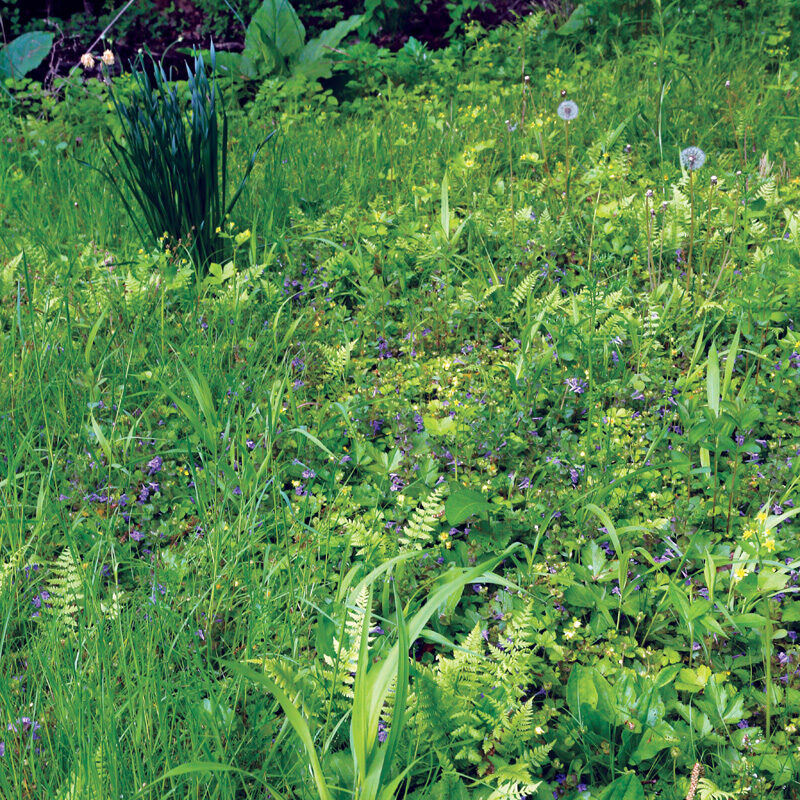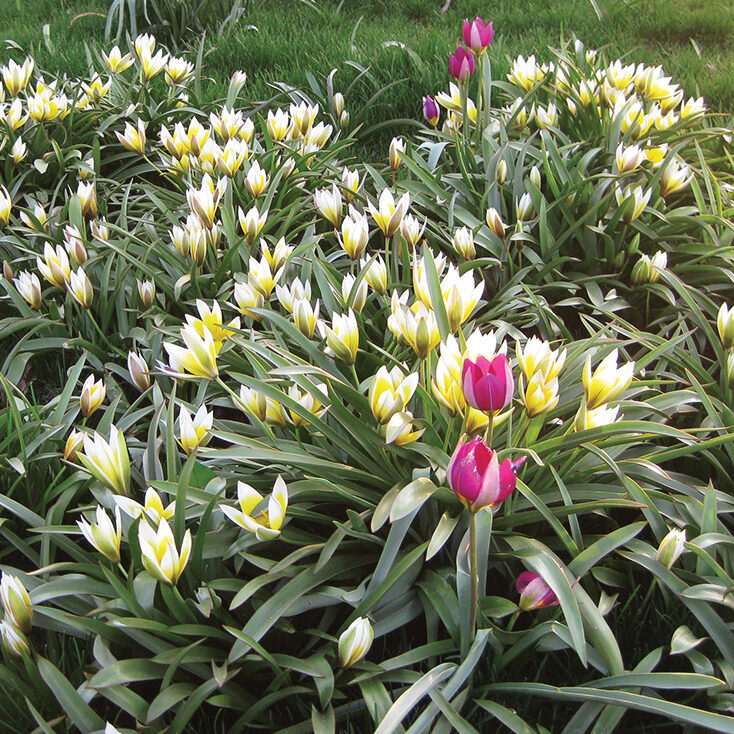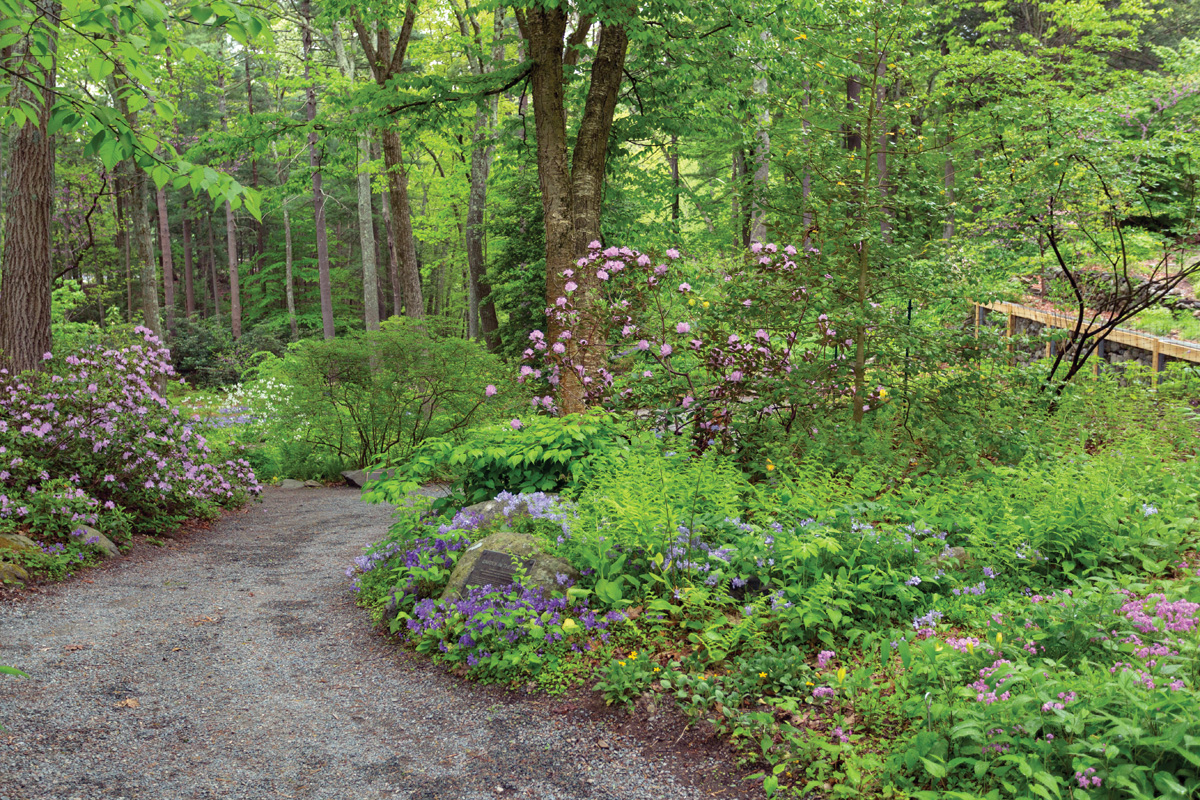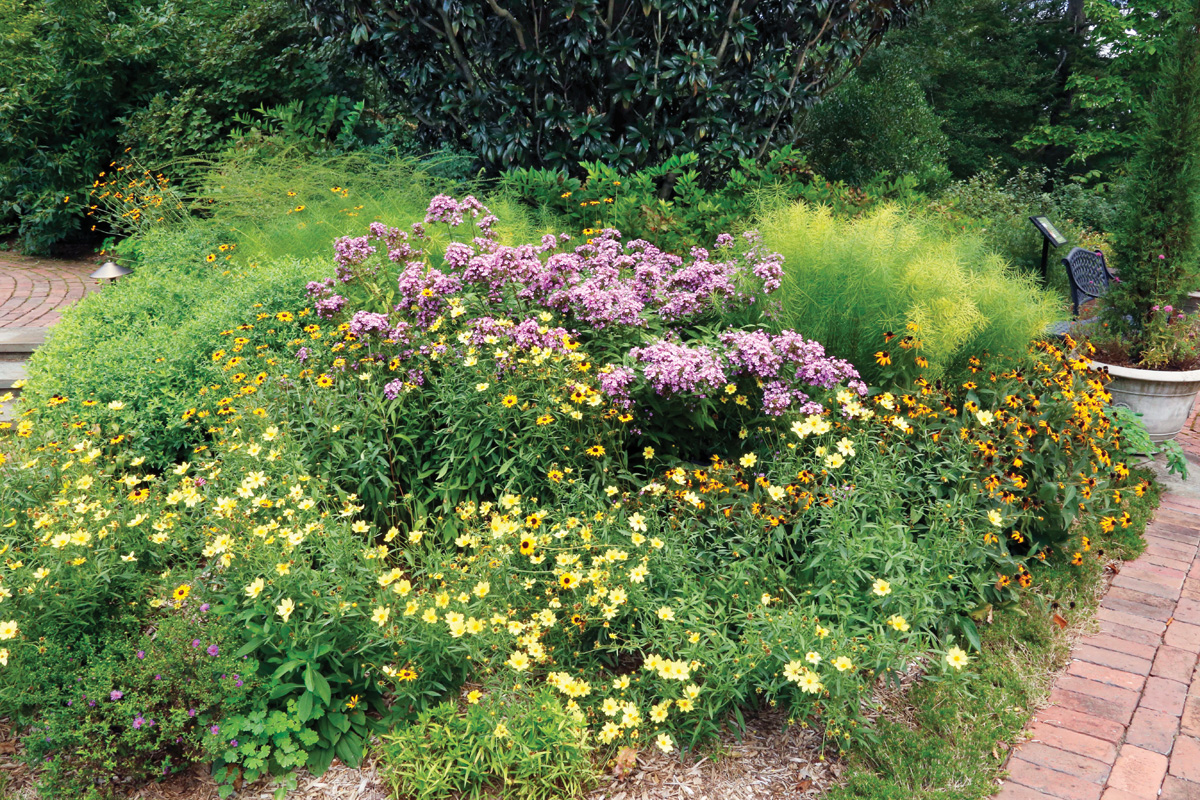NO MOW MAY, a movement that started in 2019 in the U.K., has challenged how we think about lawns. For at least one month of the year, we are encouraged to view the green carpet that supports our outdoor activities as an ecological powerhouse that can feed and support wildlife, sequester carbon, keep soil in place, improve air quality, and still provide us with a welcoming place to play and relax.
 |
 |
|
| Facts and Figures | The American lawn, by the stats |
|
Since the 1930s, government-insured mortgages have made the dream of homeownership attainable for millions of Americans. For most, the dream has come complete with a lawn that signals upper class. Today, lawns have become the largest single crop cultivated in the United States.
|
As a public-awareness campaign, No Mow May has had some positive effects. For example, it has been quite successful in helping people to view their lawns as extensions of their gardens. If we are making conscious choices in our gardens to support pollinators and wildlife, why should that intention stop at the edge of the lawn? And in a limited sense, not mowing a particular patch of turf in May and allowing more flowers to develop will help pollinators temporarily. But one month is a fraction of the growing season, no matter where you live.
Viewed through this lens, No Mow May is performative at best. If you continue to cut your grass short during the rest of the growing season, the benefit for insects is relatively tiny. And as any gardener surely knows, simply refraining from mowing for a month will not result in a picturesque meadow full of wildflowers.
The final straw is that cutting grass severely after allowing it to grow long is stressful for the plants. Your lawn may not look good for quite some time after that first big cutback, and the grass will need extra water and care to recover.

Mowing less is not a bad idea
A manicured lawn has traditionally been seen as a sign that the homeowner is a responsible person who contributes to and values their neighborhood. Lawn care creates many jobs, and real estate trends indicate that a home with a neatly maintained landscape will sell for more. These are all sound reasons to invest in your lawn and garden.
However, lawns consume an inordinate amount of water, fertilizer, pesticides, fuel, and time (see “The American Lawn, by the Stats”, above). And while many communities strive for each household to maintain the same standard of care, a paradox exists in this notion of uniformity. While one neighbor may judge you for tolerating the dandelions that release seeds onto their lawn, the same person may think nothing of the excess fertilizer or pesticides that leave their property and enter the water table or a local waterway. And what about the auditory assault that neighbors are exposed to by lawn mowers and leaf blowers?

Whether we like it or not, lawns are part of the American landscape, but perhaps we can collectively imagine a future where pride in the home landscape is decoupled from the judgment of others. One valuable takeaway from No Mow May is that reducing human interference can help a lawn to become a healthier, more productive ecosystem. Being a good neighbor and a champion of ecology need not conflict with one another. By demonstrating maintenance practices that support wildlife and still keep the HOA happy, everyday gardeners can take leading roles promoting environmental stewardship in their communities and neighborhoods.
Ulrich Lorimer is the director of horticulture at the Native Plant Trust in Framingham, Massachusetts.
Fine Gardening Recommended Products

A.M. Leonard Deluxe Soil Knife & Leather Sheath Combo
Fine Gardening receives a commission for items purchased through links on this site, including Amazon Associates and other affiliate advertising programs.
MULTITASKING DUAL EDGES: a deep serrated edge and a tapered slicing edge ideal for tough or delicate cuts. DURABLE 6-inch stainless steel blade withstands 300 lbs of pressure. TWINE CUTTING NOTCH, DEPTH GAUGE MARKINGS & spear point – no need to switch tools when using this garden knife. LEATHER SHEATH: heavy duty, protective, clip on sheath to keep your knife convenient and secure. LIFETIME WARRANTY.
